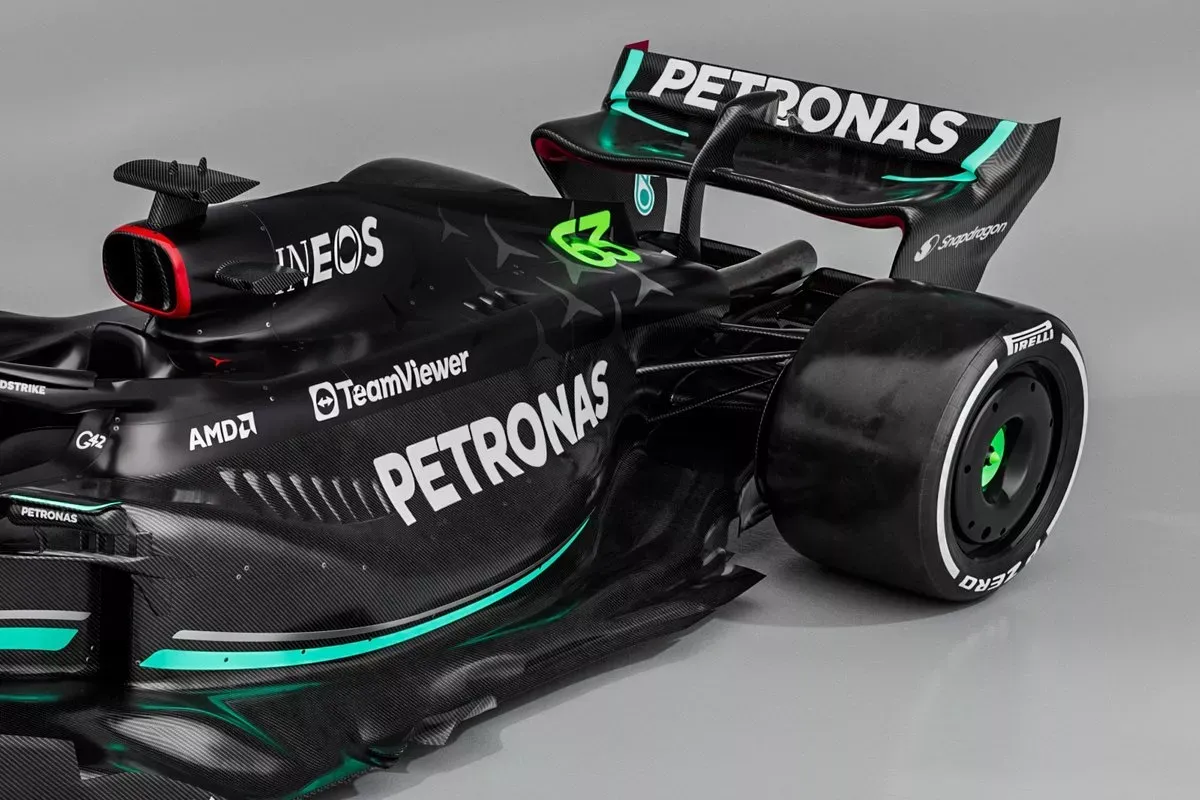Mercedes News
Mercedes' return to a black Formula 1 livery with lots of weight-saving naked carbon fibre received a lot of interest during its Wednedsday launch, but the W14 features plenty of significant changes that deserve our attention.
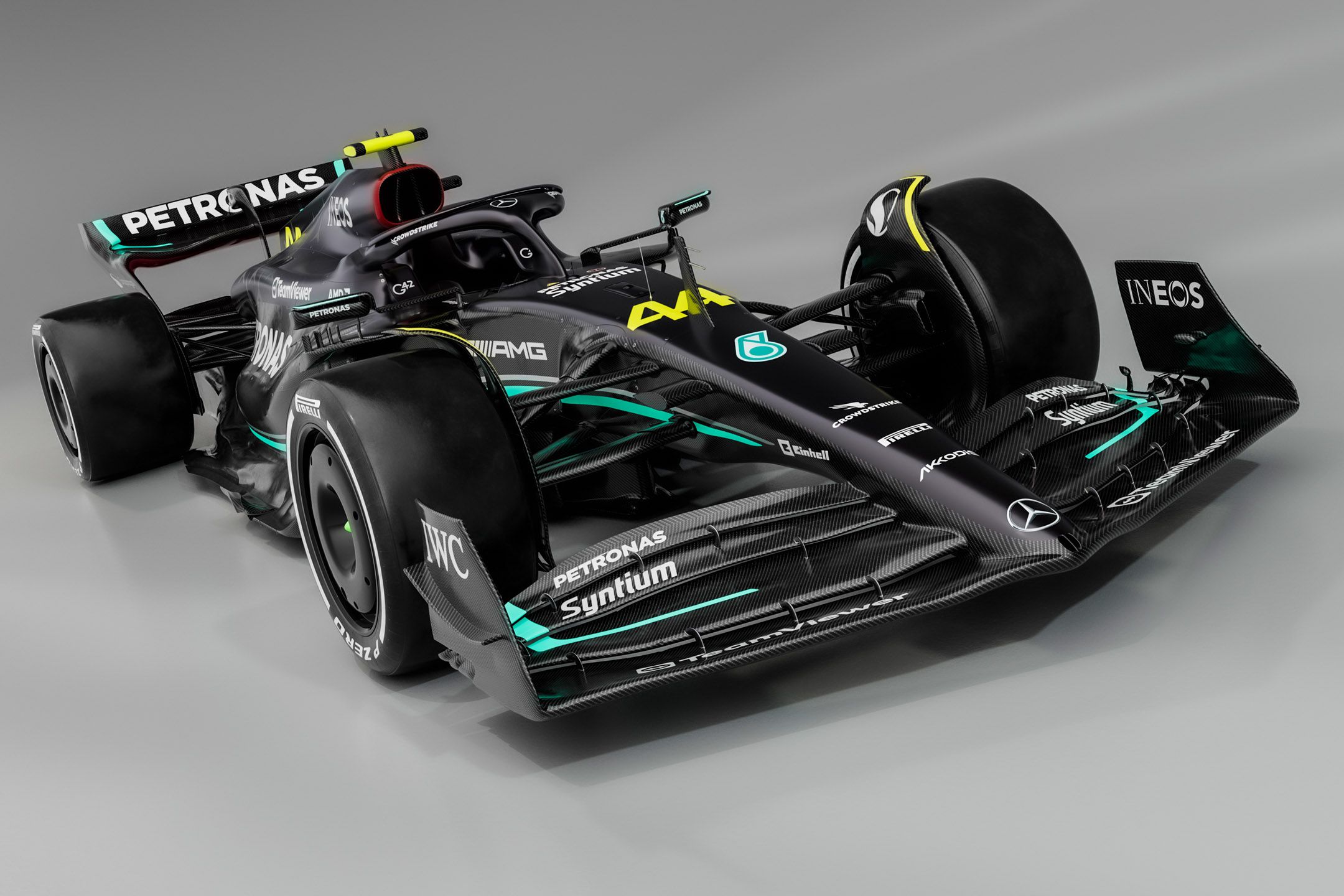
Mercedes made a bold statement about its quest for improvement by revealing its black and raw carbon fibre skin on the new W14 Formula 1 car on Wednesday.
While that move triggered a lot of interest, there were actually a lot of other detailed areas of the car that deserve as much attention.
The W14 itself hasn't been completely overhauled, as some might have expected given the trials and tribulations that its predecessor posed for the team during 2022.
However, there’s all-round refinements to be noted, including the zeropod solution. This remains for now, but in a different form, as it has been re-engineered to improve the airflow’s passage to the rear of the car.
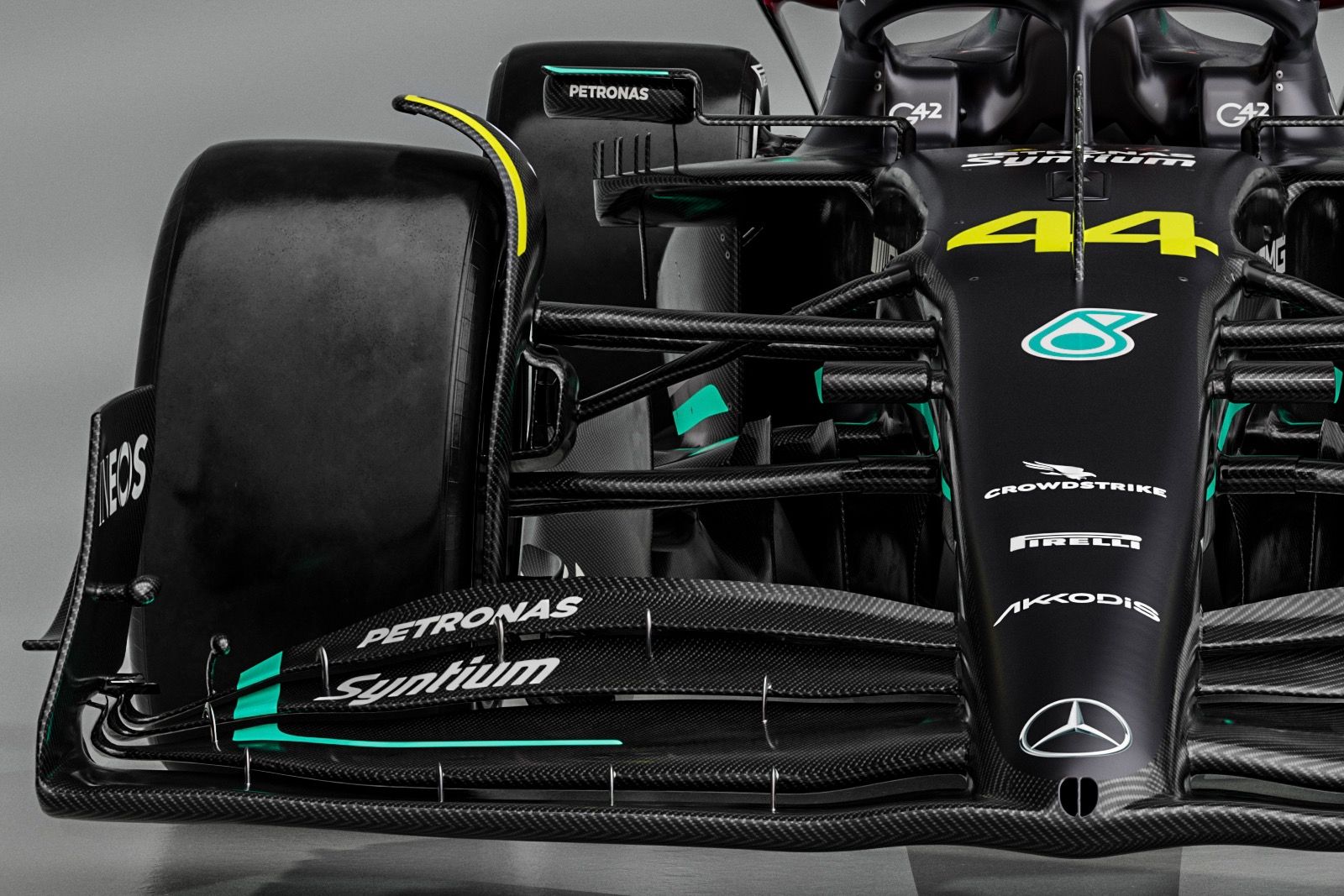
The infamous upper SIS cowling is still there and broadly indicates how much narrower the rest of its sidepod is compared with the rest of the grid when viewed from the front.
Atop we find a similar arrangement to last season in terms of the fins and mirrors, albeit with the latter complying with the new width requirements.
At the front of the sidepod, the inlet is now vertical, rather than tapering down and out toward the floor’s edge. The flank of the sidepod is also wider than in 2022, as it too takes on more of a conventional shape in order to improve flow to the rear of the car.
It’s clear that these changes have required an immense amount of work to repackage the internal components, with the team continuing to find ways to bury the radiators deeper into the chassis than it has before.
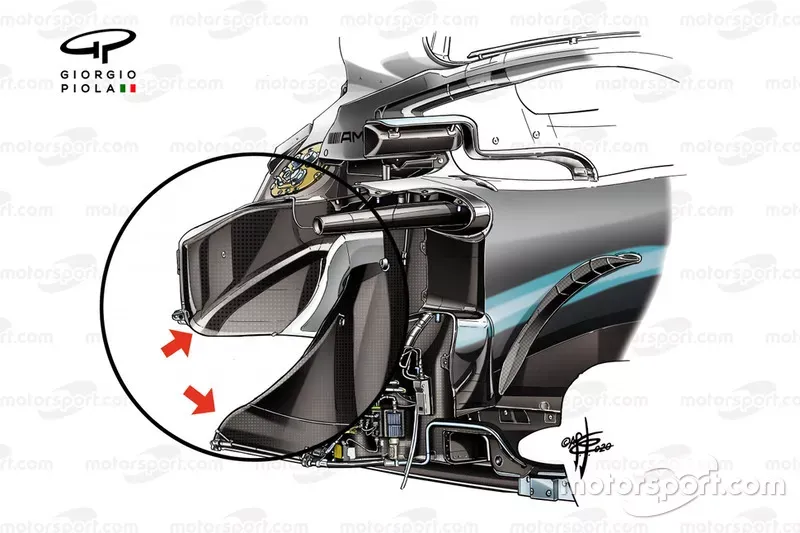
And, whilst this is a design feature that most of the grid have now appropriated to one extent or another, being the first to do so has always given Mercedes a head start on the rest, allowing it to find ways to be one step ahead of its rivals.
The high-waisted engine cover shelf that emerged from the halo section of the W13 has also been retained. However, akin with what its competitors did in 2022, it now extends all the way down to the rear of the car and terminates in a wider rear cooling outlet.
The shelf also has a chute-like geometry, rather than being completely flat, in order that the various flow structures don’t overlap as they compete for space.
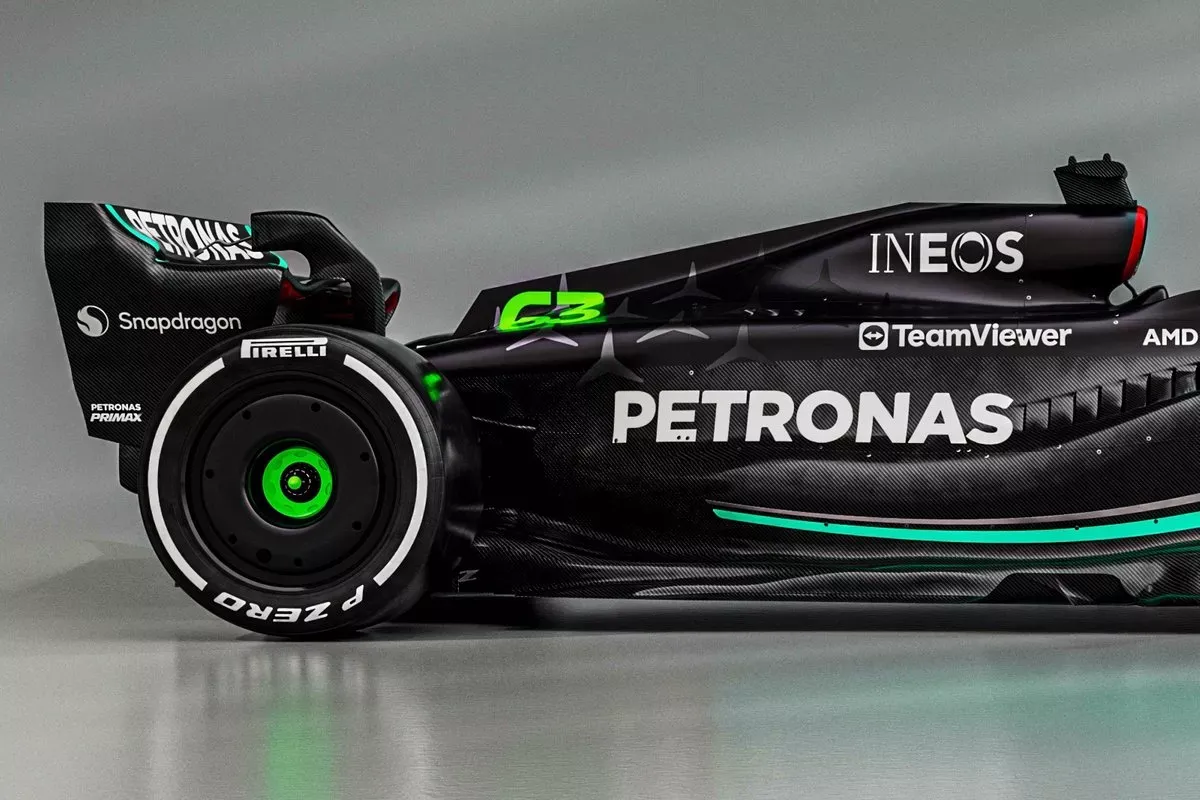
And, again, like rival designs, the cooling outlet is hoisted as high as possible, not only clearing a passage beneath for the suspension elements but also improving flow into the coke bottle region and over the top surfaces around the engine cover.
In terms of cooling, there’s further assistance from cooling gills on the sidepod’s upper surface and the engine cover shelf, both of which will be able to be altered depending on the conditions faced at a given race.
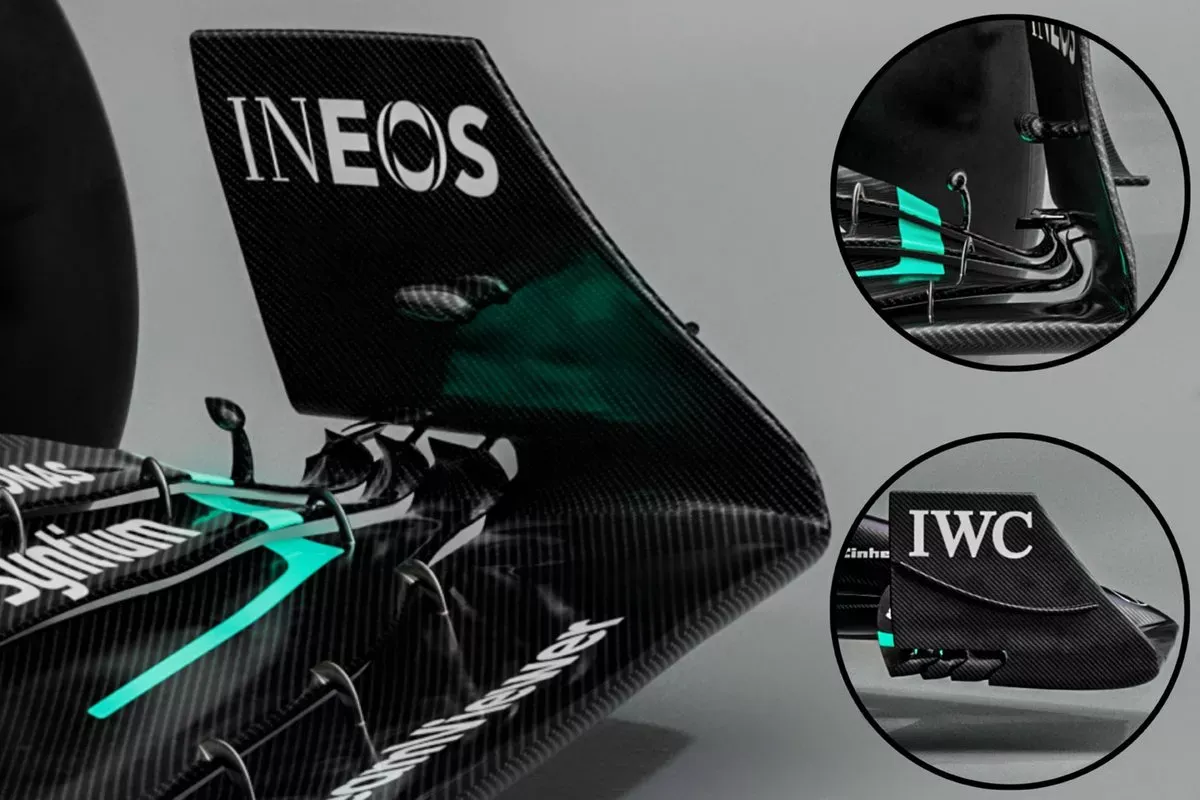
At the front of the car there’s been some changes to the length of the nose and the way it fits into the architecture of the front wing.
Meanwhile, the slot gap separator brackets that the team looked to introduce at the Mexican Grand Prix last season and have since been made legal, are nowhere to be found despite appearing on the new Ferrari. They could come in the next few weeks though.
Interestingly, Mercedes has found a way to legalise the front wing endplate design that it introduced in Miami last season, with the changes in regulations maybe even opening the door for some improvements to the concept.
The flaps are now floating, and are only connected to the endplate by narrow brackets which results in each of them having their own tip.
This means each is able to shed their own vortex, which will combine with the airflow generated by the endplate's raised lower edge and another winglet that’s mounted on the endplate above them.
This should lead to the wing being able to generate more outwash and generally help clean up the tyre wake created by the front wheel assembly, improving flow downstream as a consequence.
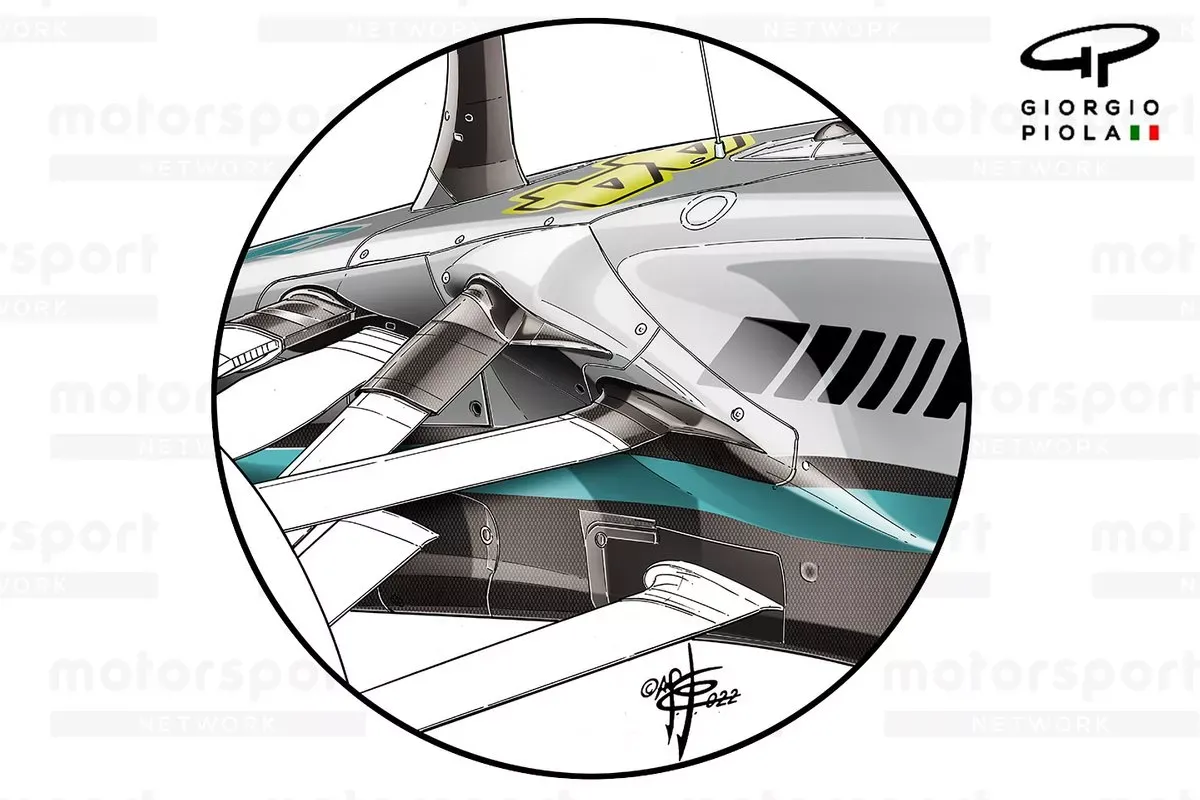
It’s unquestionable that this year’s car benefits from the groundwork laid down by the changes made during 2022, with the most notable of those being the update package that arrived at the British Grand Prix.
This was the point in the season where the team seemed to unlock some of the latent performance of the car and laid the foundations for some of its better results.
One of those updates that can be seen on the W13, above, was a change around the front suspension, with a blister added to the bodywork in order that the airflow is convinced to follow a certain trajectory towards the floor and sidepods behind.
This has been further optimised for 2023, as the team has also made changes to the front suspension layout to improve its aerodynamic characteristics.
In terms of the floor’s edge, we know that Mercedes made steady progress here throughout the course of 2022, with the team working on concepts late into the season.
And, whilst the regulations have been altered in this region for 2023, there’s still plenty that it can and has carried over from exploratory work from last year.
Like the end of season specification, the floor edge shown on the renders features an elongated edge wing with an aggressive upwash flap and strake combo in the forwardmost section, whilst the floor and edge wing tapers along its length.
Given the rate of progress that was seen in this region of the car by all of the teams last season, the fact the regulations have changed and the performance that can be harnessed here, it’s safe to say that whatever we’re looking at might not be around for long though, as the team probably already has updates in the pipeline to help extract more from it.
It has already admitted that the sidepod shape is going to change early in the season.
